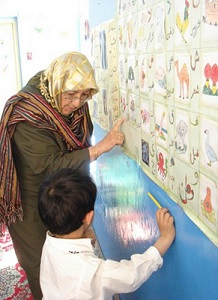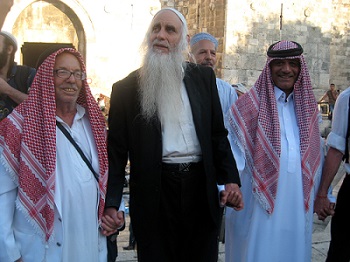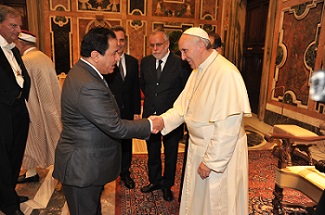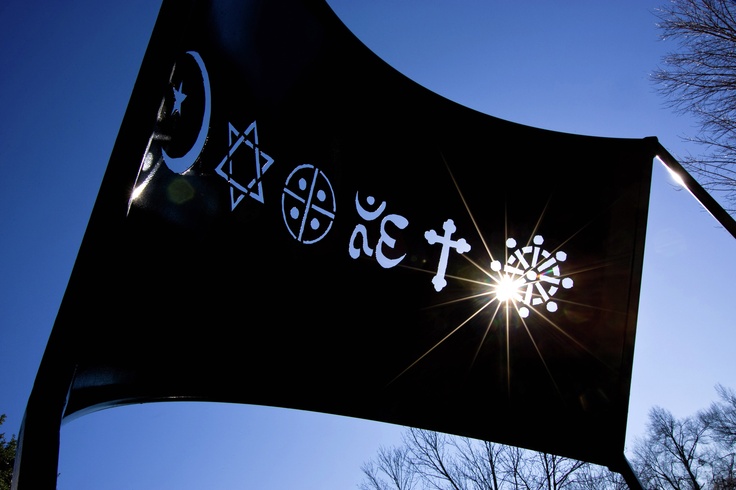By: Hyacinth Mascarenhas
Teaching in Afghanistan at a time when the Taliban was still in control was no easy feat.
Having earned a pre-med degree at the University of California at Stockton and a Master’s degree in Public Health from Loma Linda University, Dr. Sakena Yacoobi moved to Afghanistan to create underground schools for women in 1995 – an idea that was extremely dangerous for both Yacoobi and her students. With the location, timing and routes of the school constantly changing, girls would go at different times of the day to avoid suspicion. Yacoobi taught them how to read and write, how to be self-sufficient, and worked with them on understanding how the Quran held women with esteem and empowerment. She also encouraged them to talk with their families about what they had learned. Her efforts, however, did not go unnoticed.
One day, she was stopped on the road by a group of boys who refused to let her pass and go ahead; not until she agreed to give them an education too.
Today, this soft-spoken Afghan woman is the founder and executive director of the Afghan Institute of Learning, one of the largest women-led, citizen organizations in the country, where she oversees educational, vocational, healthcare and leadership services for more than 350,000 women and girls in the region every year. Yacoobi is also the winner of the 2013 Opus Prize as well as one of 26 peacemakers awarded by the Tanenbaum Center for Interreligious Understanding – a secular, non-sectarian organization in New York that works to combat religious prejudice, promote mutual respect, and empower international and interfaith activists.

Driven by their religious beliefs, Tanenbaum’s peacemakers are located across the globe and work on the ground to build stability in their society through conflict resolution, education and healthcare. Yacoubi’s work, and that of Tanenbaum, marks a unique interfaith trend where numerous organizations, religious leaders and activists are looking to spark dialogue, encourage discourse and promote religious respect and education within and beyond their communities.
“I think religion has always been a powerful force in people’s lives and an identity around which tensions and conflicts emerged,” said Joyce Dubensky, chief executive of the Tanenbaum Center. “There are some changes going on in our society that are exacerbating these tensions and I think that speaks to the need for more work to be done around religious differences, similarities and respect.”
Founded in 1992, Tanenbaum focuses on practical change and education in schools, healthcare and the workplace to provide training, educational resources and practical programming and encourage people to move beyond the stereotypes, become respectfully curious and build bridges across religious differences. According to a recent survey conducted by Tanenbaum, more than 36 percent of America workers say they have observed or personally experienced religious “non-accommodation” in the workplace. “This survey puts employers on notice,” said Dubensky in a statement. “American workplaces increasingly reflect the makeup of the country; they’re more and more diverse. Work is the place where people with extremely different beliefs interact on a regular basis. But where there’s more diversity, the survey shows that we can expect to find more conflict.”
Collaborating with other organizations, both interfaith and not, Tanenbaum works to move beyond just dialogue and do practical work in education, the workplace and healthcare both in the US and internationally.
Post 9/11 interfaith collaboration
Based in New York City, Tanenbaum is inspired by “The Golden Rule – to treat others as you would like to be treated –[and] the Platinum Rule – to treat others as they want to be treated.” Their unique location, however, gives them an important responsibility and ability to explore and address religious biases and real world implications in a city with such a diverse population and complex history with religion especially post 9/11.
“During the summer of 2010 when there was a lot of noise about what was called the ‘Ground Zero mosque,’ there was a lot of misinformation and disinformation about Sharia, Muslims, hate mongering, etc. Tanenbaum got a call from a colleague running an Islamic education organization who was concerned that on the anniversary of 9/11, Muslim students around the country would be beaten up because of all the incendiary language that summer,” said Dubensky. “She asked if Tanenbaum could create some educational material since some teachers did not know how to respond and needed some concrete data and material in order to teach and respond to the issue in a way that was not influenced by bias or misinformation.”
Tanenbaum responded to the request by creating a packet of material called Park 51 and disseminated them to the Department of Education in New York. They in turn reviewed the documents and sent them out to every principal in New York City. The material included factual material, questions for teachers to address, information about the Park51 Cultural Center, and data about what happened, the intentions of those involved, and other necessary material.
The incident also sparked a coalition of New York based interfaith organizations called ‘Prepare New York’ to help create a city-wide vision to “promote healing and reconciliation in anticipation of the tenth anniversary of 9/11.” Organizations including Tanenbaum, the Auburn Seminary and its Center for Multifaith Education, Intersections International, Quest, the Interfaith Center of New York, and Odyssey Networks sought to shift the conversation away from harmful stereotypes, language and mistrust to one that celebrates the city’s diversity and serve as a model for other cities across America.
 These practical and innovative solutions to deal with real world interfaith issues have not only become important, but necessary especially in the melting pot that is the United States of America. It is also imperative for international relations and diplomacy in forming new bonds with other countries, cultures, societies and people in a way that is beyond the political realm of officials, treaties and legislation. It brings people together in a meaningful and practical way that can extend beyond the boundaries of a piece of paper or document and can be passed on to future generations.
These practical and innovative solutions to deal with real world interfaith issues have not only become important, but necessary especially in the melting pot that is the United States of America. It is also imperative for international relations and diplomacy in forming new bonds with other countries, cultures, societies and people in a way that is beyond the political realm of officials, treaties and legislation. It brings people together in a meaningful and practical way that can extend beyond the boundaries of a piece of paper or document and can be passed on to future generations.
According to Dubensky, religious literacy and education for children, is especially important. “When you hear the words “those people,” you have to listen very closely to what comes next and then you can challenge it with your personal experience, data and research, from the fact that always is almost always wrong, and so you teach kids very practical ways to address it,” said Dubensky. The goal of Tanenbaum’s pedagogy – The Seven Principles for Inclusive Education – she says, is that children develop different skill sets that encourage and enable them to become global citizens.
“They think that being different is normal, interesting, which we call ‘respectful curiosity,’ they ask questions about differences that are not demeaning but show interest and a desire to learn, said Dubensky. “They learn listening skills so that they can hear what the other person is saying even if they disagree, and they’ve learned what a stereotype is and how to debunk it. And we say when you have those skills, you have the skills for global citizenship.”
Interfaith initiatives in the Middle East
Another pioneering initiative for worldwide interfaith dialogue is one set up by Saudi King Abdullah in Vienna. Established in November 2012, the King Abdullah Bin Abdulaziz International Centre for Interreligious and Intercultural Dialogue (KAICIID), one of the first multi-faith initiatives from a Muslim source, is particularly significant coming from the very heartland of Islam. According to the Huffington Post, the center is also the first global organization focused on religion and is also backed by an international treaty signed by Saudi Arabia, Spain and Austria.
“Our world today is made up of increasingly diverse communities and societies, and the universal lessons of coexistence and understanding are more important than ever before,” said KAICIID Secretary General Faisal Bin Muaammar. “It is only through educating ourselves and others, learning about ourselves and those we share our world with, that we may begin to relate to each other through our commonalities rather than our differences.”
Focusing on its “Image of the Other” program, the center recently held a forum in November on how people of different faiths and cultures are portrayed on the internet, in media and education as part of its multi-year initiative in Vienna. The event attracted about 500 religious leaders, policy makers and experts working in education and religion. The center also includes a fellowship program to bring young leaders from all religions together in Vienna for three to four months to study selected issues and how each religion and faith deals and approaches them.

Together with the members of the center’s board, Muaammar also met with Pope Francis, leader of the Catholic Church during the International Meeting for Peace organized by the Community of Sant’Egidio in Rome, which gathered religious leaders from every part of the world for days of dialogue and prayers for peace in October. “Dialogue is what helps us understand each other and respect the distinctions among us as followers of different religions,” said Muaammar. “At the same time, it connects us – and allows us to come together around our numerous commonalities. Only by talking to one another can we effectively unite around the shared goal of promoting the common good.”
Moving beyond “tolerance”
Although it is heartening to know that there are numerous interfaith initiatives around the world, there is still a lot to be done to stimulate interreligious thinking and eradicate the stereotypes, misinformation and discrimination which often form an important part of interfaith work, dialogue and action. The efforts of these organizations to continue fighting the good fight, tear down stereotypes and encourage discourse, religious education, foster interfaith relations and move beyond just tolerance is nothing short of inspiring.
According to Dubensky, words are especially important in the work they do and says Tanenbaum does not support ‘tolerance.’
“The real meaning of tolerance to me is: I will tolerate you. I will tolerate your existence. I will tolerate your right to be. That is not, for me, an inclusive approach. It’s an approach that allows someone to exist but almost implies so long as you stay far away, separate. Go over there and I’ll tolerate you,” said Dubensky. “Although that word is often intended to mean being welcoming and kind, in fact doesn’t really mean that. The word ‘respect’ for me means, I will acknowledge you, respect who you are, our differences and our similarities.”




















[…] Moving beyond stereotypes: Interfaith organizations continue to fight the good fight. December 4th, 2013. […]